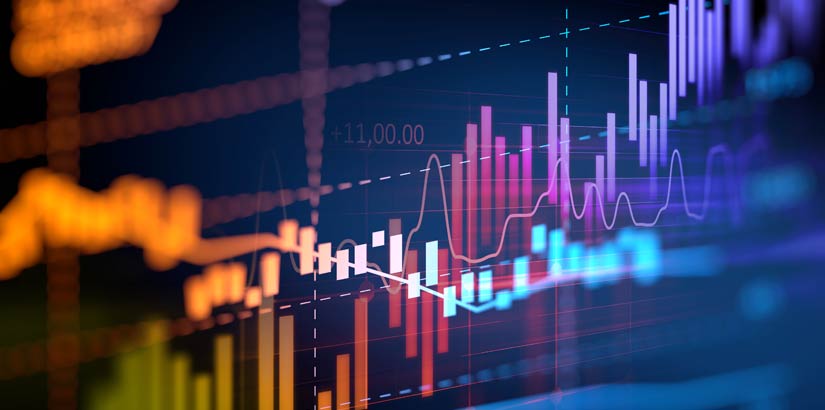Q1 2021 Market Commentary
On January 1, less than 1% of the US population had received at least one dose of the COVID-19 vaccine. As of April 7, more than 33% of the population has received at least one dose, and that jumps to 77% for people 65 and older.1 That highlights significant progress against the biggest threat to economic recovery: a resurgent pandemic.
This progress towards protecting a large portion of the population has helped in-person businesses begin to reopen across the country and has given many people the freedom they haven’t felt in more than a year. Combined with a proposed $1.9 trillion infrastructure package and a Fed that’s in no hurry to tighten monetary policy, the ingredients were in place for stock market prices to push higher.
The first quarter saw the S&P 500 increase by +6.2%. There were periods of volatility as interest rates shifted higher, and moments of irrationality (see: Gamestop saga), but stock prices trended upward on re-opening optimism throughout the quarter. Conversely, rising interest rates led to the Bloomberg Barclays US Aggregate Bond Index declining by -3.4% in the first quarter (bond prices move inversely to interest rates).
Just as vaccination progress is being closely tracked against the increase in contagious variants, the progress of corporate earnings and employment growth is being closely tracked against the market-led increase in interest rates. Investors have demanded a higher premium for the risk of deploying their capital in the current market environment, which creates ripple impacts for high-flying growth stocks, bond prices, real estate, CD yields, and even the strength of the US dollar. We expect this theme, the impact of interest rates on everything, to remain a key narrative in the coming years.
In spite of investors pushing longer-term interest rates higher, the Fed has communicated its commitment to ultra-low short-term rates through 2023. This accommodative policy supports risk-taking, capital investment, and makes available cheap borrowing for individuals, companies, and the federal government. Central banks around the world face the same tightrope walk, balancing stimulus to kickstart their economies with the risk of inflation caused by vastly expanding the money supply. For now, it seems to be working.
Power of Hope, Risk of Expectation
When a growth narrative takes hold, the power of hope can push current prices far beyond what makes sense based on current earnings. This has been true for companies like Tesla or Zoom recently, and countless other examples of speculative excess throughout market history. When this occurs for a single company, it is fascinating but not material to the performance of a diversified portfolio. When it occurs for the stock market as a whole, we pay closer attention.
The trailing 12-month price/earnings (P/E) ratio for the S&P 500 is currently at 45.5.2 This measurement of how much investors are willing to pay for a single dollar of current earnings is considerably higher than the average of 26.5 over the past 20 years of historically low-interest rates. This single number doesn’t show us the changes to come with certainty, but it does confirm that current prices have run well ahead of current earnings – and history shows that this dynamic is not sustainable.
As expectations for accelerating company profits push market prices higher, the margin for error decreases. One way or another, the P/E ratio will come back toward historical averages. The current hope is that earnings will grow to support current prices as economic restrictions are lifted and consumers turn their new freedom into travel and spending. If sufficient earnings growth doesn’t materialize, then prices will temporarily decline to match the reality of current earnings.
A Blend of Trends
As market prices have continued to grow in 2021, there is a new set of companies and sectors leading the way. Value stocks that lagged last year have leapt higher, while highly-priced growth stocks have felt the brunt of interest rate increases. Further, energy stocks were the best performing sector as global trade accelerated, disruptions restricted supply chains, and oil prices recovered. Small-cap stocks in the US also saw significant gains as these companies tend to be more heavily tied to the strength of the physical economy. Our commitment to diversification allowed our clients to continue steady participation in these other areas of market growth.
Beyond a particular industry, the primary driver of market growth over the past year has undoubtedly been the US government.3 Fiscal stimulus has created a bridge loan for the economy to get back on its feet and is forecasted to create +6.4% GDP growth in the US.4 This is key to economic recovery, but it also raises investor fears of impending inflation. While interest rates and inflation are likely to remain a concern in coming quarters, there are also many secular disinflationary forces — globalization, technology adoption, higher unemployment — that continue to be a check on core inflation limiting the likelihood of worst-case outcomes.
The Pattern of Growth
Mirroring the vaccination progress of the first quarter, both US and international economies saw material growth in Q1. There is still a considerable way to go to reach pre-pandemic levels of economic activity as well as higher vaccination rates. We are careful to not get too optimistic about returns over the remainder of the year – just as we counseled our clients to not get too pessimistic during last year’s downward market volatility.
There are signs of short-term froth as the market hit an all-time high at the end of the first quarter. While we are pleased the market has rebounded from the pandemic selloff, we know that stocks do not move in a straight line indefinitely, and volatility is inevitable. This is the pattern of growth. Interest rates are likely to be volatile while both production and employment are recovering, and equity prices are likely to behave in kind. Holding a diversified portfolio, our clients can stay invested through the volatility, and look forward more confidently despite potential price pullbacks and interest rate fluctuation.
Sources
1 CDC.gov COVID data tracker CDC
2 P/E’s & Yields on Major Indexes WSJ
3 Congress passed the American Rescue Plan worth about $1.9 trillion (~9% of GDP) in March 2021. This was the third major stimulus package passed in the last year following the $2 trillion CARES Act in March 2020 and the $900 billion Covid-19 Aid bill in December 2020.
4 IMF projects 6% global growth, driven in part by U.S. GDP growth Marketplace.org
 | About Brian Kozel, CFP®Brian is a partner, senior advisor, and Chief Investment Officer at North Berkeley Wealth Management. Brian helps clients feel confident as they navigate their financial journey. |
This commentary on this website reflects the personal opinions, viewpoints, and analyses of the North Berkeley Wealth Management (“North Berkeley”) employees providing such comments, and should not be regarded as a description of advisory services provided by North Berkeley or performance returns of any North Berkeley client. The views reflected in the commentary are subject to change at any time without notice. Nothing on this website constitutes investment advice, performance data, or any recommendation that any particular security, portfolio of securities, transaction, or investment strategy is suitable for any specific person. Any mention of a particular security and related performance data is not a recommendation to buy or sell that security. North Berkeley manages its clients’ accounts using a variety of investment techniques and strategies, which are not necessarily discussed in the commentary. Investments in securities involve the risk of loss. Past performance is no guarantee of future results.



